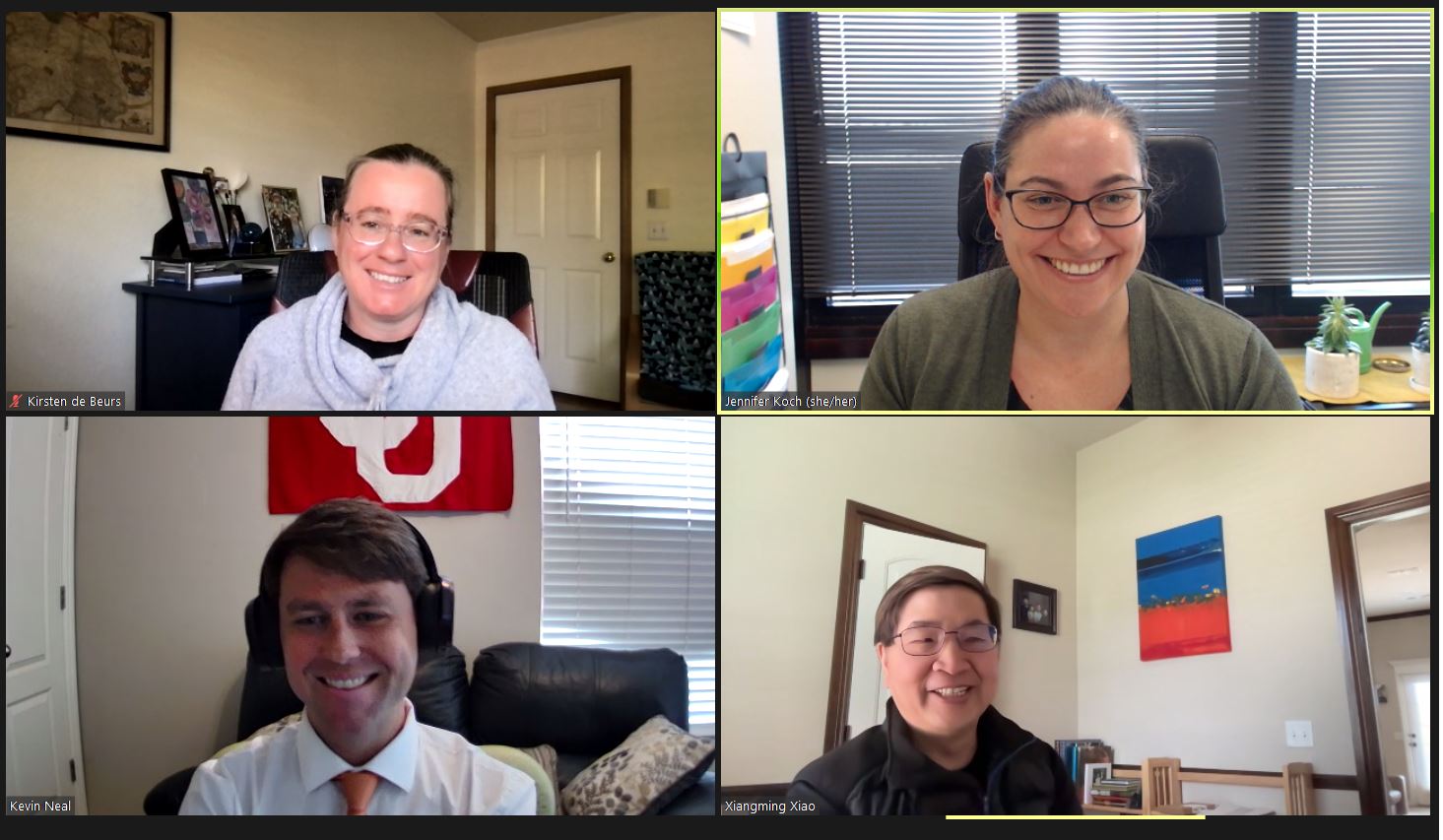The manuscript authored by Carrie Pavlowsky, Jennifer Koch, and Travis Gliedt on the failed Wind Catcher Project, published in the journal Socio-Ecological Practice Research, was selected as Editors Choice. The publication can be accessed free of charge here.
Research Award
The project “Establishing an Integrated Soil, Land Use, Weather, Climate Monitoring Network in Peru” (PI: Brad Illston, Co-PIs: Kirsten de Beurs, David Ebert, Timothy Filley), was selected for the OU Vice President for Research and Partnership Annual Award for Excellence in Research Grants. For more information, see here.
Angie Rosellini-Labombarde to attend COP27
Congratulations to Angie Rosellini-Labombarde who was selected to attend the 2022 United Nations Climate Change Conference (COP27) in Sharm El Sheikh, Egypt as an observer for the American Meteorological Society (AMS).
Nastaran Abdoli to attend SC-CASC early career workshop
Great news! Nastaran Abdoli was selected to attend the 2022 SC-CASC Early Career Workshop. To learn more about SC-CASC Webinars & Workshops click here.
Congratulation to Shelby Snapp
Congratulations to Shelby Snapp for receiving a student travel award at the 2022 IALE-NA conference!
Congratulations to Kevin Neal
Congratulations to Kevin Neal for successfully defending his MS thesis titled “Urban green space distribution in Oklahoma City: A spatial analysis of bio-physical and socio-economic characteristics.”

Congratulations to David Conn
Congratulations to David Conn for successfully defending his MS thesis titled “Exploring the spatiotemporal relationships among population, land use change, and water use in the United States portion of the Rio Grande River Basin.”

Congratulations to Shelby Snapp
Congratulations to Shelby Snapp for successfully defending her MS thesis titled “Modeling futurity: Examining epistemological assumptions and political context in the modeling process.”

Call for papers – SI Landscape Ecology
Anita T. Morzillo and Jennifer A.M. Koch are the guest editors of the latest special issue in our flagship journal Landscape Ecology entitled “Strengthening bidirectional linkages between social and ecological systems in landscape ecology”. Find more information in the attached Call for Papers.
Case study published on CCAST
Would you like to learn more about our team’s research in the Rio Grande/Bravo basin? Check out this new case study, published as part of the Collaborative Conservation and Adaptation Strategy Toolbox (CCAST).
Find a 2-page handout for the case study here.

